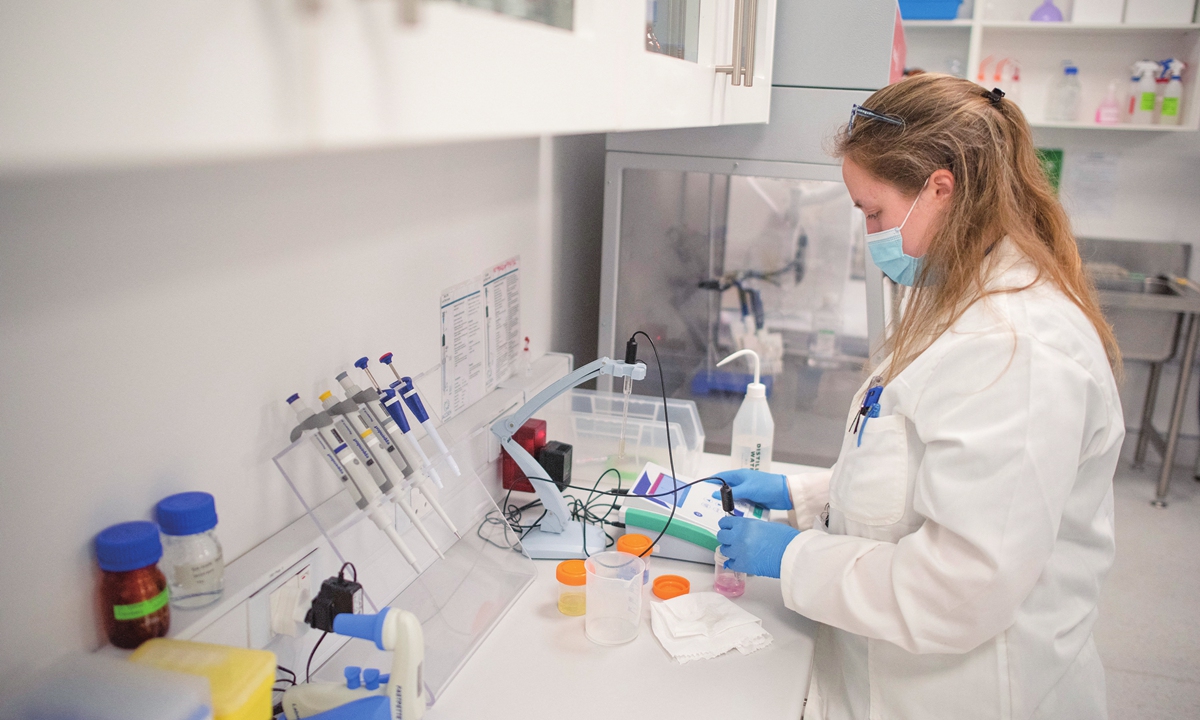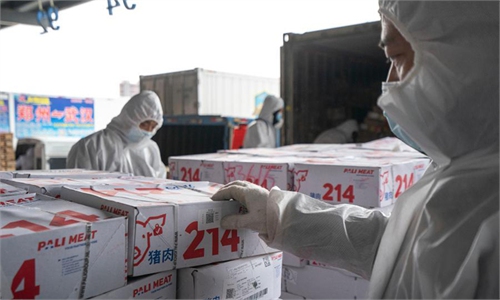Wuhan possibly not the origin of SAR-CoV-2 human infection; new study supports twin beginnings

File Photo: AFP
Researchers from China and the US released an article recently that supports twin-beginnings of COVID-19 in Asia and Europe, which further demonstrates that Wuhan, where the world's first COVID-19 outbreak was reported, is probably not where the SARS-CoV-2 first infected humans.
During the spread of SARS-CoV-2, there have been multiple waves of replacement between strains, each of which having a distinct set of mutations. The first wave is a group of four mutations all belong to the amino acid change D614G.
This D614G group, fixed at the start of the pandemic, is the foundation of all subsequent waves of strains. Curiously, the group is absent in early Asian samples but present (and likely common) in Europe from the beginning, according to the article.
However, the European strains would have no time to evolve into the 4 DG mutations, had they come directly from the early Asian strain. Very likely, the European strain had acquired the highly adaptive DG mutations in the pre-pandemic Europe and had been spreading in parallel with the Asian strains, the article said.
There was a period of two-way spread between Asia and Europe but, by May of 2020, the European strains had supplanted the Asian strains globally. This large-scale replacement of one set of mutations for another has since been replayed many times as COVID-19 progresses.
With the twin-beginnings, the place in China that takes the credit of being PL1 (or even PL0) is not even the one that dominates in the subsequent global spread; it is merely the first one to be out of the gate, read the article.
The remaining issue is why the weaker strain in China was noticed earlier than the European strain. One simple explanation is the different R0 (basic reproduction number) values in different socio-behavioral settings in different regions (such as higher population density in urban markets of bigger cities). Moreover, early stage epidemics are highly stochastic even with the same R0 value, according to the article.
The article was published in the Chinese journal National Science Review on December 11. Co-authors include researchers from the Sun Yat-sen University, Kunming Institute of Zoology under the Chinese Academy of Sciences and the University of Chicago.
The place where SARS-CoV-2 originated is referred to PL0. It has been suggested that PL0 is not the same as PL1, the first place that reports the impending epidemic, as people in PL1 are not immuned to the virus, which demonstrated that they had not contacted the virus previously, Chung-I Wu, one of the co-authors and a professor from the University of Chicago and Sun Yat-sen University, said in an email to the Global Times on Thursday.
In one word, PL0 should be a place that provides the environment for the virus to gradually evolve from animals to humans in a long period. So far, there still lacks clear scientific proof and determined conclusion of the PL0 for SARS-CoV-2, according to Wu.




